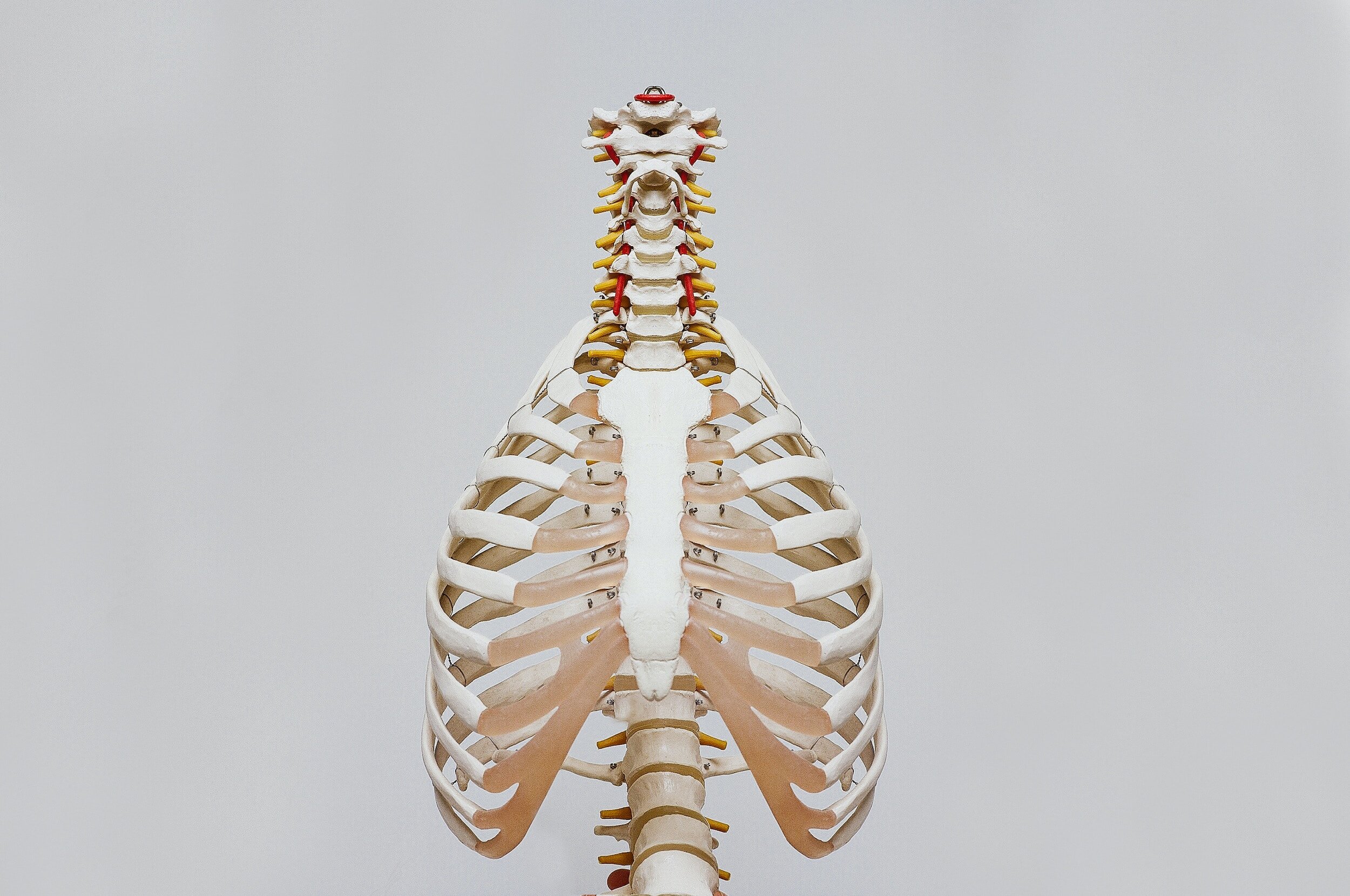Conditions
Mid Back Pain
Mid Back Pain
Your mid back spans from the base of your neck to the lower ribs, an area known as the thoracic spine. Your ribs attach to your thoracic spine and wrap around your torso, before attaching to cartilage that connects to your sternum.
Mid back pain often involves postural, sudden, or repetitive trauma to the joints in the thoracic spine, as well as the muscles and ligaments. A common type of mid back pain is a rib joint issue, which is often described as a rib being “out of place”.
Chiropractors are able to treat mid back pain by identifying the tissue source of pain, and performing hands-on joint and muscle therapies that relieve stress to the tissues involved. Sometimes posture, mobility, or strengthening exercises are also helpful to relieve pain and improve function.
-
Strain to one or more muscles of the mid back, usually following repetitive, traumatic, or postural loads.
Chiropractors are able to use soft tissue therapies, and exercises like posture modification, mobility, and strengthening to help with these types of injuries.
-
A sprain to the ligaments or joint capsules of the mid back. This is usually present after trauma such as a car accident, or sporting injury.
Treatment often involves hands on therapy in addition to exercise therapy to help support ligaments through the healing process.
-
Injury or irritation to the joints (known as the facet joints) in the mid back. This is a very common type of acute and chronic low back pain, and can be caused by either postural, repetitive, or traumatic loads. Often this type of pain is felt close to the midline of the spine.
Chiropractors frequently treat this type of back pain by using joint-specific therapies like manipulation, and mobilization. This type of back pain also responds well to certain exercise therapies like posture modification, mobility, strengthening, and muscle control exercises.
-
Similar to facet joint irritation, the rib joints that form on the sides of the mid back can become irritated when overstretched or compressed.
This can feel like a very sudden and intense pain, that sometimes wraps around the side and front to your chest, and causes pain when breathing or coughing.
Chiropractors help this type of back pain by finding the rib joints involved, and using either a manipulation or mobilization to relieve pressure and restore normal movement. Sometimes relief can be felt very quickly after a long period of the rib joint feeling “stuck”, hence the expression that the joint was “out of place”.
-
Scoliosis is a curvature of the spine in lateral (side to side) and rotational (twisting) directions. 80% of scoliosis is from IAS, or Idiopathic Adolescent Scoliosis. The lateral and rotational movements place asymmetric pressure on spinal joints, discs, and muscles.
It shows up first most commonly in the teenage years, as early as 10 years old but up to 16. Some times it is not noticed until later teen years, but the majority of curve “development” happens between 10-16. This is also the time when Chiropractors are able to have the most impact in altering the trajectory of the curve.
Mild-moderate scoliosis can be treated successfully by Chiropractors using a combination of hands on joint and muscle techniques, as well as spinal mobility, control, posture, and strengthening exercises. Newer studies demonstrate that the curve progression can be slowed, and the curve can even be reduced with these treatments.
More severe scoliosis may not be able to be altered, and in some cases may require bracing or surgery. These types of scoliosis may still benefit from Chiropractic care, although the focus is more symptom relief and optimizing function than changing the degree of curvature.
-
Kyphosis described a normal curve of the spine, where the spine rounds forward. Hyperkyphosis is when this curve is increased, leading to a slouched or slumping type of posture. This is most often in the mid back. Hypokyphosis is when the curve is reduced or straightened.
Either curvature changes can place pressure on spinal joints, discs, and muscles. Chiropractors are experts at assessing spine function, and can help to both assess the nature of kyphosis as well as treat any issues that may be present.
Chiropractic treatment usually involves hands on joint and muscle therapies, with exercises to improve mobility, control, posture, and strength. Mild-moderate curve changes can often be improved significantly, while more severe curve changes due to structural causes can be given relief and optimized.
-
Costochondritis is usually the result of direct trauma to the side or front of the ribs. Our rib bones form a fibrous joint with cartilage 2-3 inches away from our sternum, and this fibrous junction can be inflamed with trauma.
When this happens, the rib joints in the back are also effected, and working to relieve pressure on them often helps the pain in the front to feel better by restoring normal function. It is sometimes also helpful for Chiropractors to use soft tissue therapies to the muscles surrounding the rib-cartilage junction, or using taping techniques to help “stabilize” the area.

